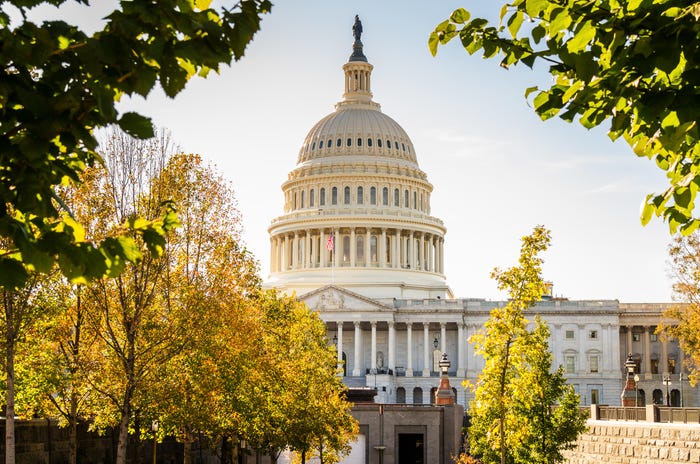Continued ‘pause’ announced for California statewide NG911 deploymentContinued ‘pause’ announced for California statewide NG911 deployment
Already halted for more than three months, California’s deployment of next-generation 911 (NG911) technology will continue to be under a “pause” at least into the spring, as the California Office of Emergency Services (Cal OES) conducts a review of the much-delayed statewide initiative to determine the most appropriate path forward.
Already halted for more than three months, California’s deployment of next-generation 911 (NG911) technology will continue to be under a “pause” at least into the spring, as the California Office of Emergency Services (Cal OES) conducts a review of the much-delayed statewide initiative to determine the most appropriate path forward.
New Cal OES Chief Deputy Director Lisa Mangat announced the review plans immediately after the California State 911 Advisory Board emerged from an executive session that lasted more than an hour during the beginning of yesterday’s board meeting.
“This pause gives us a good opportunity to really do a review of the technology, particularly in regards to the PSAPs that are implementing this technology,” Mangat said during the 911 Advisory Board meeting, which was webcast. “And when I say ‘do a review,’ it’s not just from the technical piece of it—not just the equipment and network, but also the business side of it. What is the lived experience of the 911 call centers and the PSAPs that have deployed this technology? That will all be part of our review.
“That review is going to inform how we move forward with the [NG911] project. But make no mistake, implementation of this technology continues to be a priority to Cal OES and the [California state] administration.”
Cal OES already has begun the NG911 review, according to Mangat.
“We expect to have that completed in the spring and to be able to talk about what a go-forward framework looks like,” she said.
This review will be conducted with the help of a consultant, who was not named during the 911 Advisory Board meeting.
“We have brought in a consultant with vast experience, primarily with large state technology projects,” Mangat said. “Previously, he served as the chief deputy director of the California Department of Technology—the control agency in the state that oversees large technology projects. He also has some experience in call centers from his past life. You will be meeting him at future Advisory Board meetings.
“He will be joining us as we visit each of the PSAPs and get to understand the lived experiences of the PSAPs, along with our engineers.”
While Cal OES has paused the deployment of NG911—the IP-based platform that is designed to replace legacy 911 technology that was developed more than 40 years ago, in some cases—Mangat emphasized that the agency continues to support the 5% of the state’s 440 PSAPs that already have migrated to NG911.
“I want to be very clear: That [NG911 deployment pause] does not mean that we are not prioritizing the support of the existing PSAPs where that new technology is employed,” Mangat said. “That continues to be a priority for us and our vendors.
In addition, the 911 Advisory Board voted to establish a subcommittee that will focus on the NG911 deployment project.
Mangat yesterday ran the 911 Advisory Board meeting, filling the longtime role of Walter “Budge” Currier, who led California’s NG911 efforts for years before parting ways with Cal OES last year.
Currier and Cal OES reportedly split last August, although some 911 Advisory Board members told NBC Bay Area television reporter Candace Nguyen that he did not learn of the situation until last November.
During the 911 Advisory Board meeting in November, board members were informed that no new PSAPs had migrated to NG911 technology during the previous two months. During the November meeting, the NG911 deployment initiative formally was put “on hold,” pending an assessment of the project.
California 911 Advisory Board members also agreed to call a special meeting, during which problems with the NG911 PSAPs and rollout migrations would be examined thoroughly. This special meeting was set for Jan. 16 but was not conducted as scheduled, with focus on the Los Angeles-area wildfires being cited as the reason. Yesterday’s meeting was the 911 Advisory Board regular quarterly meeting and the first since November.
California’s NG911 rollout is being monitored by 911 officials throughout the U.S., as many hoped that the Cal OES initiative could demonstrate to others how NG911 could be deployed efficiently and effectively in all of the more than 6,000 PSAPs in the country. In addition, some public-safety advocates believed that a strong NG911 deployment in California could help justify an infusion of $10-$20 billion in federal funding to pay for a nationwide effort.
Instead, California has spent more than $400 million on its NG911 project and has transitioned only 23 PSAPs—only four more than the number Currier noted during his presentation on the matter during the IWCE 2024 event in March. This pace is very different from the deployment pace Currier shared with Urgent Communications in March 2021, when he projected that NG911 would be deployed statewide in California by the end of 2021 or early in 2022.





